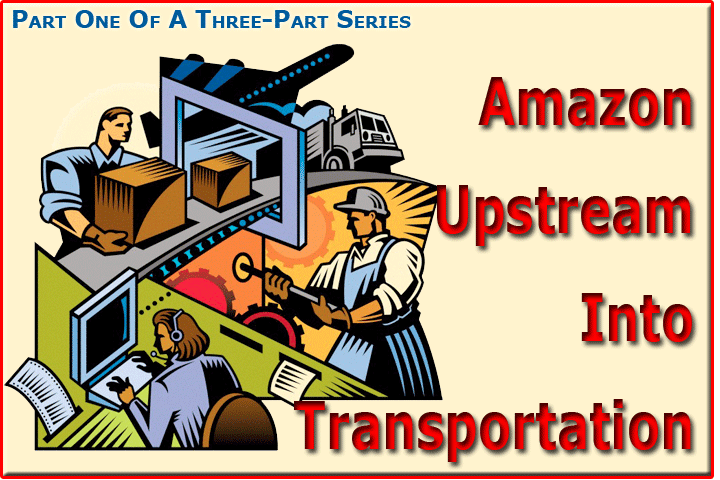 |
 |
 #INTHEAIREVERYWHERE |
| Vol. 15 No. 35 | Tuesday
May 3, 2016 |
(Exclusive)—Rumors
that Amazon is one of three bidders looking to establish
a presence at Germany’s Frankfurt-Hahn Airport
continue to mount. The location would offer easy access
to warehouses across Europe, potentially generating
cost savings and service improvements. It would also
give Amazon better access to Germany, Europe’s
largest economy.
(Continued Next Issue. |
 |
The picture
for freight demand remains mixed, but signs of an
upturn in March and the sense that European and U.S.
retailers are restocking are buoying industry confidence,
at least on some lanes.
|
 |
 |
 Are
you ever at an event and can’t connect a face with
a name? Are
you ever at an event and can’t connect a face with
a name?Have you ever noticed that at some trade shows or big meetings, there is always one guy that seems to know everybody’s name? At CNS our favorite is Helmut Berchtold, Owner of adi Management Consult, Inc. and Management Consulting. Helmut places people and never forgets a face. Helmut, Luis Fernando Paredes (Aeromexpress), and Gavin-jon Deeks (Chapman Freeborn) scored eight under par on the 18-hole golf course at Gaylord Opryland, winning the CNS Golf Tourney. Luis celebrated the event, saying: “We won 100 dollars and it cost us over 200 to play, but it was all in fun,” he laughed. The great thing about a conference that you attend on a yearly basis is the people that you might otherwise never see. You have the opportunity to spend a lot of time with those people during a couple days locked in a resort and tied to a string of evening social events. 
We saw our friends Helmut and Gabriele on the last night of CNS (Tuesday April 12). Everyone showed up country style, in jeans and hats and garb apropos of a city where Johnny Cash and Merle Haggard once roamed. When it comes to executive placement for our business, Helmut has the keen eye and the fine hand of a surgeon, with a track record of getting things right when matching up various airline and air cargo industry employers with staff and top executives. “We love to attend CNS as this venue offers an opportunity to see most of the people we do business with in one place,” Helmut said. But Helmut, who has been at the sometimes tricky effort of executive placement for some time, notes that “every year demand for business proficiencies goes up while the amount of money employers want to pay goes down.” “But maybe that is just the natural cycle of things,” he adds quickly. “There is no magic bullet here. “In the executive search, like anything else, you get what you pay for,” he insists. Helmut Berchtold’s consulting career began with Brussels-based Metra Proudfoot, where he made his reputation as someone who understands the industry and is able to execute money saving options. It is said Helmut was responsible for saving clients a total of US$40 million while at Proudfoot. Armed with a talent for finding the right people for the job, and with logistics experience that includes 12 years as CIO for DB Schenker in New York, Helmut struck out on his own. “Many employers, airlines included, place great emphasis on training and continued education of their employees. “They have learned over the years that improved quality and enhanced company performance is only achievable by having highly qualified employees. “Hence, a company’s competitive edge is directly related to the level of sophistication and qualifications of its human resources. “Successful enterprises actively influence their future by succession planning for managers, including early identification of candidates and outlining a plan to prepare them for those higher positions. “Some companies even place these candidates in talent pools/environments to allow for open free flow of ideas and innovations to facilitate their preparation and development.” Geoffrey |
 |
 When
it comes to dedication to development of Latin American
and especially South America air cargo, few in the market
have the chops and gravitas of Claudio Silva. When
it comes to dedication to development of Latin American
and especially South America air cargo, few in the market
have the chops and gravitas of Claudio Silva.Some years ago, Claudio headed up the team that put LAN Cargo on air cargo maps. Now, alongside some former colleagues at that carrier and the ever-evolving West Coast transportation icon Joe Czyzyk, CEO Mercury Air Group, here comes Global Force GSSA. Based in Miami with offices in various U.S. cities, Global Force fields a string of offices from Argentina to Brazil, Chile, Ecuador, Peru, Panama, and onto China and Japan. “Our founders are personally involved in each local market, bringing years of knowledge and relationships in the air cargo industry,” Claudio said. Global Force is the latest manifestation of an effort Claudio began when he departed LAN Cargo in 2011 to form his own GSA company. The three founders pictured above had their own individual GSA companies representing carriers in North America and Asia. “Finally in 2015 we combined our efforts into Global Force GSSA; we believe we can deliver solutions with local knowledge and global presence. “To date we represent Cathay Pacific in Argentina, Brazil, Chile, Colombia, Ecuador, and Peru,” Claudio said. Global Force GSSA also represents BOA Boliviana de Aviacion, Bolivia’s nationally owned LCC airline that began in 2010 and is rapidly expanding into several international destinations throughout the Americas. Geoffrey |
 |
If
You Missed Any Of The Previous 3 Issues Of FlyingTypers
Access complete issue by clicking on issue icon or Access specific articles by clicking on article title |
||
 Vol. 15 No. 32 FIATA Goes Green In San Antonio Not Easy Being Green BIFA Backs Multimodal May Chuckles For April 21, 2016 Eye In The Sky Prince Was American Royalty Passover Blessings |
 Vol. 15 No. 33 Security Report From The Commissioner Container Weight Boosts Air? Take A Tip From The Tulips Chuckles For April 25, 2016 |
|
Publisher-Geoffrey
Arend • Managing Editor-Flossie Arend • Film Editor-Ralph Arend • Special Assignments-Sabiha Arend, Emily Arend • Advertising Sales-Judy Miller |
|


 “Since
last summer, we have been working closely with Amazon
to demonstrate that a dedicated, fully customized
air cargo network can be a strong supplement to existing
transportation and distribution resources,”
said Joe Hete, (right) President and CEO of ATSG.
“Since
last summer, we have been working closely with Amazon
to demonstrate that a dedicated, fully customized
air cargo network can be a strong supplement to existing
transportation and distribution resources,”
said Joe Hete, (right) President and CEO of ATSG.
 Wolfgang
Lehmacher, Head of Supply Chain and Transport Industries
at the World Economic Forum, said Amazon’s move
into global logistics and air freight were designed
to increase supply chain control, but does not expect
this to threaten incumbents just yet, although that
could change rapidly.
Wolfgang
Lehmacher, Head of Supply Chain and Transport Industries
at the World Economic Forum, said Amazon’s move
into global logistics and air freight were designed
to increase supply chain control, but does not expect
this to threaten incumbents just yet, although that
could change rapidly.
 Yet despite the slight improvement in rates last month,
the Association of Asia Pacific Airlines noted that
Asian carriers registered a 5.3 percent decline in
March traffic even with the pick-up in Chinese exports
following the Lunar New Year factory closures. Freight
load factors remained under pressure, with the average
international freight load factor registering a 5.2
percentage point decline to 62.9 percent after accounting
for a 2.6 percent expansion in offered freight capacity.
Yet despite the slight improvement in rates last month,
the Association of Asia Pacific Airlines noted that
Asian carriers registered a 5.3 percent decline in
March traffic even with the pick-up in Chinese exports
following the Lunar New Year factory closures. Freight
load factors remained under pressure, with the average
international freight load factor registering a 5.2
percentage point decline to 62.9 percent after accounting
for a 2.6 percent expansion in offered freight capacity.
